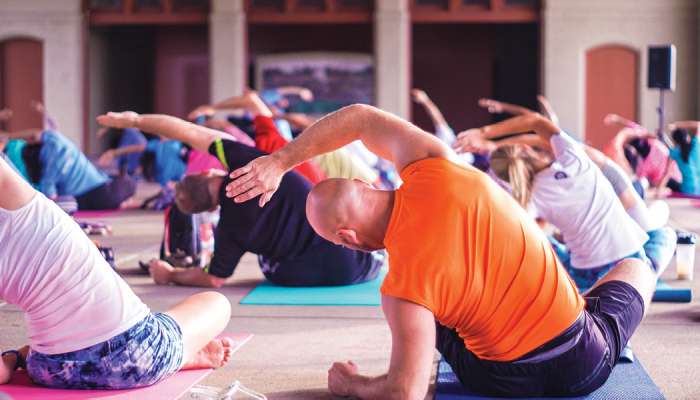
If you're coping with pain, such as joint pain caused by osteoarthritis (OA), you may feel like you've been sitting out on life. Pain can make you reluctant to participate in activities that you enjoy and miss out on connecting with those you love. But experts will tell you that if you can move, even just a little more than you do now, you will reap benefits well beyond the physical.
"Movement is not just a powerful and effective tool for pain management," says personal trainer Pete McCall, NASM-CPT, PES, and Voltaren spokesperson based in the US. "Movement also brings people together. Getting out and moving with others can help reduce pain, but more importantly it will also help you stay motivated and feel connected."
But how can you start, especially if you've been sedentary for a while?
"Start slow," says McCall, "and listen to your body. Mild aches after engaging your joints for the first time in a while may be expected, but if you experience persistent or sharp pain, connect with your healthcare provider. It's always a good idea to consult your doctor before starting any new exercise program."
Here are tips for increasing your activity level to help with pain management and feel more connected with others.
Consider working with a personal trainer.
Starting an exercise programme with an experienced personal trainer can help you customize your workouts for your individual needs and comfortability level. Sometimes just talking through your pain and concerns with a trained professional can be very helpful.
Start with low-impact exercise.
Walking, swimming and biking are all low-impact exercises that are easier on your joints - and that you can do with other people. Start with short sessions at a comfortable pace, gradually increasing the number of times you exercise per week, along with the length of time and intensity of your workouts. Don't feel the need to push too fast too soon. The key is to build consistency over time.
Join a community centered around movement - or create one.
Whether it's an exercise class, yoga centre or walking club, getting together with others who are also focusing on their well-being can be encouraging and even fun. If you don't find the kind of group or class you want in your area, consider starting your own! Ask like-minded friends or family members to join you for regular walks, outdoor games or visits to your community pool to help keep you on track and turn exercising into a social event.
Warm up first, and cool down after exercise.
You should always begin your exercise session with gentle movement and stretching to help you ease into your physical activity and prevent injury. After working out, take time to cool down by reducing the intensity of your exercise, then ending with stretches.
Seek pain relief options.
If you have osteoarthritis, a degenerative disease that affects the joints, you may experience pain, stiffness or swelling in areas such as your hands, wrists, knees or ankles. Consult a doctor for right diagnosis.
Don't sit out on life.
If you see an opportunity to try a new sport, join a dance class, go on a nature hike or participate in a charity walking event - say "yes" to movement. Not only could it help relieve some of your pain, but it will make you feel that sense of connection to others that will boost your mood and encourage you to keep going on your wellness journey.
"You may be surprised by where movement can take you," says McCall. "I've never had a client say they regret getting started - only that they wish they'd started sooner."